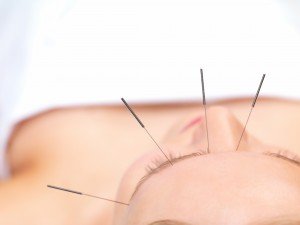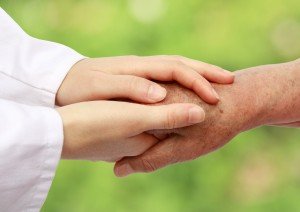East-West Perspective
Chinese Wellness Based Healthcare System: An Inspiring Solution To Health & Economic Crisis in America
by Dr. Roger Jahnke
“The most profound medicine is produced naturally in the human body – for free!” This is the innovative foundation of a very low cost health care system.
There are many ways to turn on (activate, create, maximize) the internal medicine. By enhancing wellbeing and function – disease is neutralized (healed) or even better, disease is prevented. These methods were fully described in the ancient yet practical tradition of Chinese Medicine. The Yellow Emperor and his master physicians compiled an entire book on mobilizing the “healer within” – The Classic of Inner Medicine – Huang Di Nei Jing.
Some of these methods – acupuncture and massage – require treatment from a licensed medical provider for which there is a cost. Some of them require the ingestion of nourishing and functional activating substances (herbal medicine), which also has a cost. 
One of them – self-cultivation, Qigong, Tai Chi, meditation – can be utilized by individuals at home or in public venues (parks, churches, schools, hospitals) for free.
In this way, Asian Medicine — both clinical treatment and proactive health protection — is a wellness based medicine.
We will explore this profound approach to health care, especially for its economic benefits. And, we will ask the question – “Why doesn’t the Asian Medicine profession make a very big deal out of its wellness basis, its wellness mechanism and the low cost wellness practices –Qigong and Tai Chi – that are associated with this wellness based medical system. The foundation of healing and prevention in Asian Medicine is to activate inner healing resources through acupuncture, herbs, manual therapy and – least expensively – Qigong and Tai Chi. Based on the knowledge, wisdom and application of Chinese wellness based practices, individuals, families, agencies, institutions, communities, states and even nations can prevent disease and eliminate unnecessary medical costs — now.
The basis – Qigong and Tai Chi.
It is widely known that the most horrific diseases are preventable.(1, 2) The American wellness revolution which had a false start in the 1970s, is now wide awake again. Recently, the current US President has put the words “prevention” and “personal responsibility” into the same phrase and set 8 Principles for, including “Invest in prevention and wellness”.(3) . When our society looks for what to do about this, one of the cheapest “programs” (due to group based implementation) is Asian self-care – Qigong and Tai Chi.
A bold claim:
The same mechanism that mobilizes healing resources through Chinese clinical therapeutics can be activated by average citizens at home for no cost. Individuals can heal themselves for free as well as collaborate with their integrative medical team. The citizen’s of any nation can solve any health crisis due to chronic degenerative disease.
I was personally launched into Asian Medicine In 1967, in Cincinnati Ohio, by the words of Lao Zi (Lao Tze) in Dao De Jing # 10: “Can you cultivate your essential energy and sustain the suppleness of a newborn with no cares?” To me this is the ultimate medical and health insight. Is it possible that doctors should have more questions and fewer answers? For me in my career, this question and others posed by Lao Zi form the theoretical and economic basis for the Chinese wellness based system of health care and medicine. Later that year I took my first Tai Chi class and by 1977 I opened my clinical practice in Columbus Ohio, a state that only recently embraced licensure.
The Healer Within –
As all trained in Chinese medicine know, either overtly or covertly, the medicine is not in the acupuncture needle – it is in the patient. The job of the provider (doctor, practitioner) is not to cure the disease; it is to maximize the natural healing capacity of the human system.
In a time when we have ample evidence that nearly every form of disease is preventable, it is fair to say that the key solution to all problems in health care and medicine is to really prevent preventable disease. The underlying wellness basis which is inherent to Chinese medicine is rapidly becoming a new foundation of health care and medicine in almost every intelligent and oriented health and medical initiative.
Certainly, the innovative breakthroughs in surgery, pharmacy and diagnostics of Western conventional medicine have relevance. However, it is the “discovery” of behavioral prevention and the healer within – the inner medicine, the inherent elixir – that will share its mark in medical history in the early years of the 21st century.
Wellness Based Medicine – Functional Maximization 
The profound holistic power of Chinese medicine is that it is inherently rooted in two wellness principles that conventional Western medicine has neglected until very recently. The first is the “holistic ideal” – Body-Mind-Spirit. These Three Treasures are always linked in Chinese medicine. However, they are only recently becoming linked in the emerging new conventions of Western health care.
The second is the “two medicines in one” principle of Chinese medicine. Shared with Western medicine is the “Attack the Disease” model. This is to kill or modify the pathogen or pathogenic factors. Both Western and Chinese medicine have excellent tools for “Attacking the Disease” strategies. Until very recently the wellness basis, which complements “Attack the Disease” has been unique to Chinese medicine and other holistic forms of medicine (Ayurvedic, Native, Shamanic). It is the “Foster the Righteous” model.
 This is the very essence of wellness based medicine. Rather than attacking what is wrong, the “Foster the Righteous” model maximizes what is right through the functional maximization tools of Chinese medicine – acupuncture, herbs, massage and personal wellbeing cultivation – Qigong. “Foster the Righteous” is to refine awaken and activate the “healer within” – “the inner elixir”. This is the most profound medicine which is naturally produced in the body under certain conditions.
This is the very essence of wellness based medicine. Rather than attacking what is wrong, the “Foster the Righteous” model maximizes what is right through the functional maximization tools of Chinese medicine – acupuncture, herbs, massage and personal wellbeing cultivation – Qigong. “Foster the Righteous” is to refine awaken and activate the “healer within” – “the inner elixir”. This is the most profound medicine which is naturally produced in the body under certain conditions.
While clinical prevention has been present in Western health care, only recently has behaviorally based prevention been of any relevance. As Western medicine transforms itself to the wellness and prevention framework, what is the primary model? Chinese medicine! What is the key to behavioral prevention? Qigong and nutrition the original foundations of Chinese medicine!
Western medicine is currently taking on numerous best practices of wellness, and Chinese functional enhancement medicine is the model.
Mind-Body Energetics – Qigong and Tai Chi – and Medical Cost Reduction
Among the most eloquent forms of behaviorally based wellness practice are the Chinese Mind-Body Energetics practices – Qigong and Tai Chi, which are the cousins of Yoga from India. While the powerful wellness based practices of acupuncture, body therapy and herbs have a significant cost, Qigong and Tai Chi are pretty much free once one has learned them.
While the questions about Qi (energy, function) and the nature of mind (Xin-Heart Mind) are the most interesting aspects of Qi cultivation, it is actually the economics of personal wellness that is the most compelling in our society right now. Qigong and Tai Chi (and other Mind-Body practices) are the underlying solution to many of the medical cost and quality challenges of contemporary time. They are easy to learn (simple forms), easy to get people enthusiastic about, easy to disseminate and inexpensive due to the group based learning context.
It is really very simple, people who prevent disease and who activate the inner medicine through self-initiated health enhancement practice need less clinical medicine – whether it is conventional allopathic or holistic.
Prove it –
Chinese wellness practices are most widely referenced as Mind-Body practices – also moving meditation and Chinese self-care. Qigong and Tai Chi in a multitude of forms are now being implemented in schools, universities, faith institutions, social service agencies, hospitals, clinics, spas, retreat centers, community centers, even the military. Over 70 randomized clinical trials (RCT) have recently been reviewed (4) finding that the Mind-Body wellness practices of Chinese medicine are safe and effective in treating and preventing disease and reducing risk for numerous diseases. The National Institute of Health (NIH) has recently instituted an annual event called NIH Mind-Body Week with several keynotes on Qigong and Tai Chi in September 2009 (5).
In collaboration with the University of Illinois the Institute of Integral Qigong and Tai Chi convened the National Consensus Meeting on Qigong and Tai Chi.(6) One of many new breakthroughs is the research on gene expression and the reduction of cell death (longevity practice) done with Qigong, Tai Chi and other forms of Mind-Body practice.(7) “Tai Chi Easy”, a program developed especially for bringing Tai Chi and Qigong wellness programs to schools and social service agencies, has trained 250 “Practice Leaders” in trainings in collaboration with the National Wellness Institute at the University of Wisconsin, Asian Pacific Health in CA, Western Nebraska Regional Health Authority and the Southern Arkansas Council on Aging.
Qigong is rapidly being embraced by policy makers, program coordinators, researchers and funders.
Who Will Benefit from this Paradigm Shift Opportunity?
Now here is the most provocative aspect of wellness medicine, especially for the Chinese Medicine community. In America, sadly, the major medical, social and economic opportunities associated with Chinese wellness have been neglected by the Chinese medicine profession! In personal consulting experiences, including lectures to the AMA and American Hospital Association (AHA) and the American College of Healthcare Executives (ACHE), it appears that there is a far more robust interest in the implications of wellness in conventional medical institutions than in the institutions associated with Chinese medicine.
At the Institute of Integral Qigong and Tai Chi (IIQTC), we have trained many more MDs, nurses and physical therapists than we have practitioners of Chinese medicine. The leveraging of the natural wellness currency of Chinese medicine is more in the hands of the Consortium of Academic Health Centers for Integrative Medicine (CAHCIM) than it is in the Council of Colleges of Acupuncture and Oriental Medicine (CCAOM). For the public this is excellent. No one cares where Tai Chi and Qigong are coming from, they just want to be sure to have access.
In the past, it has probably been important that the institutions that protect and refine the Chinese medicine profession to focus less on the wellness basis of Asian medicine, to focus more on the conventional methods of providing medical services and procedures in the American medical paradigm. However, it is also true that the Chinese medicine professional community is in the process of missing one of the most profound opportunities in the history of health care (both for service and for PR). 
While Chinese doctors are busy acting more like Western clinical practitioners, multitudes of MDs are acting more like Chinese doctors and vigorously recommending wellness – Qigong, Tai Chi, meditation, natural foods, etc. These doctors have to unlearn and then learn much to do this. Practitioners of Chinese medicine are already deeply trained in the principles of wellbeing and balance.
What To Do –
For the Chinese medicine community there are really only two actions necessary to leverage the inherent benefits that are within the grasp of the Oriental Medicine community:
1) Practitioners — implement Chinese wellness in word and deed, this is all inherent to the training in “the medicine”.
2) The institutions of the profession — make the policy decision to more overtly promote the wellness associated aspects of Chinese medicine.
There is a major transformation in health care in play. Mind-Body practice – Qigong and Tai Chi – is an essential component. The Chinese medical community is a natural beneficiary. It will require, however, that in clinical practice, in the professional promotion and in the formation of policy the Chinese medicine profession will need to actually live from and demonstrate the principles and promises of bona fide wellness based medicine that flow naturally from the Asian health care tradition.
References:
1. McGinnis JM, Foege WH. Actual causes of death in the United States. JAMA. 1993 Nov 10;270(18):2207-12.
2. Fries JF, Koop CE, Sokolov J, Beadle CE, Wright D. Beyond health promotion: reducing need and demand for medical care. Health Affairs. 1998 Mar-Apr;17(2):70-84.
3. Obama B. 8 Principles of Health Care. http://www.whitehouse.gov/issues/health_care/
4. Jahnke R, Larkey L. A Comprehensive Review of the Health Benefits of Qigong and Tai Chi. Accepted for publication by the American Journal of Health Promotion with final revisions. Preliminary review at http://www.instituteofintegralqigongandtaichi.org/qigong_tai_chi_research/
5. September 8 – 10, 2009, http://www.IIQTC.org/calendar/NIH_mind-body_week.htm , Plenary with Dr Roger Jahnke
6. Chodzko-Zajko W, Jahnke R, Consensus Report of The National Expert Meeting on Qigong and Tai Chi, http://healerwithinfoundation.org/National_Expert_Meeting/documents_expert.htm
7. 21st Century Breakthrough — Researching the Benefits of Mind-Body Practice by Investigating Genetic Expression http://www.instituteofintegralqigongandtaichi.org/research/21stbreakthrough.htm
Dr. Roger Jahnke, OMD – has practiced clinical Chinese medicine for over 30 years. He has traveled to China 8 times to research Qigong and Tai Chi. He is a co-founder of the National Qigong Association and is director of training and research at the Institute of Integral Qigong and Tai Chi IIQTC, http://IIQTC.org and http://FeelTheQi.com. Dr. Jahnke is the author of The Healer Within, which is widely used in wellness and health promotion programs, and The Healing Promise of Qi, which became an instant classic of mind-body practice and energy medicine. He, along with his colleagues have recently published the most comprehensive review of the Qigong and Tai Chi research literature in the American Journal of Health Promotion (AJHP). The Integral Qigong and Tai Chi Teacher Training program at the IIQTC is considered by many to be among the most credible Teacher Training programs outside of China.]


One Response to East-West Perspective – Chinese Wellness Based Healthcare System